Letters from Circe's Island: Dev Log #2
Letters from Circe's Island #2 | Thumbnailing a Cutscene by Anna Stevenson
One of the major points that we aimed to include in our game when we were ideating was some kind of a cinematic. Initially, we were thinking of making it an opening cinematic similar to Undertale, however as we continued to shape the project it changed into more of a mid-game cutscene. This cutscene functions to explain why Circe has been banished to Aἰαία.
Initial Attempt
Earlier in the project's development, I started my thumbnails for Picus's transformation scene directly based on the text of Ovid’s Metamorphoses.
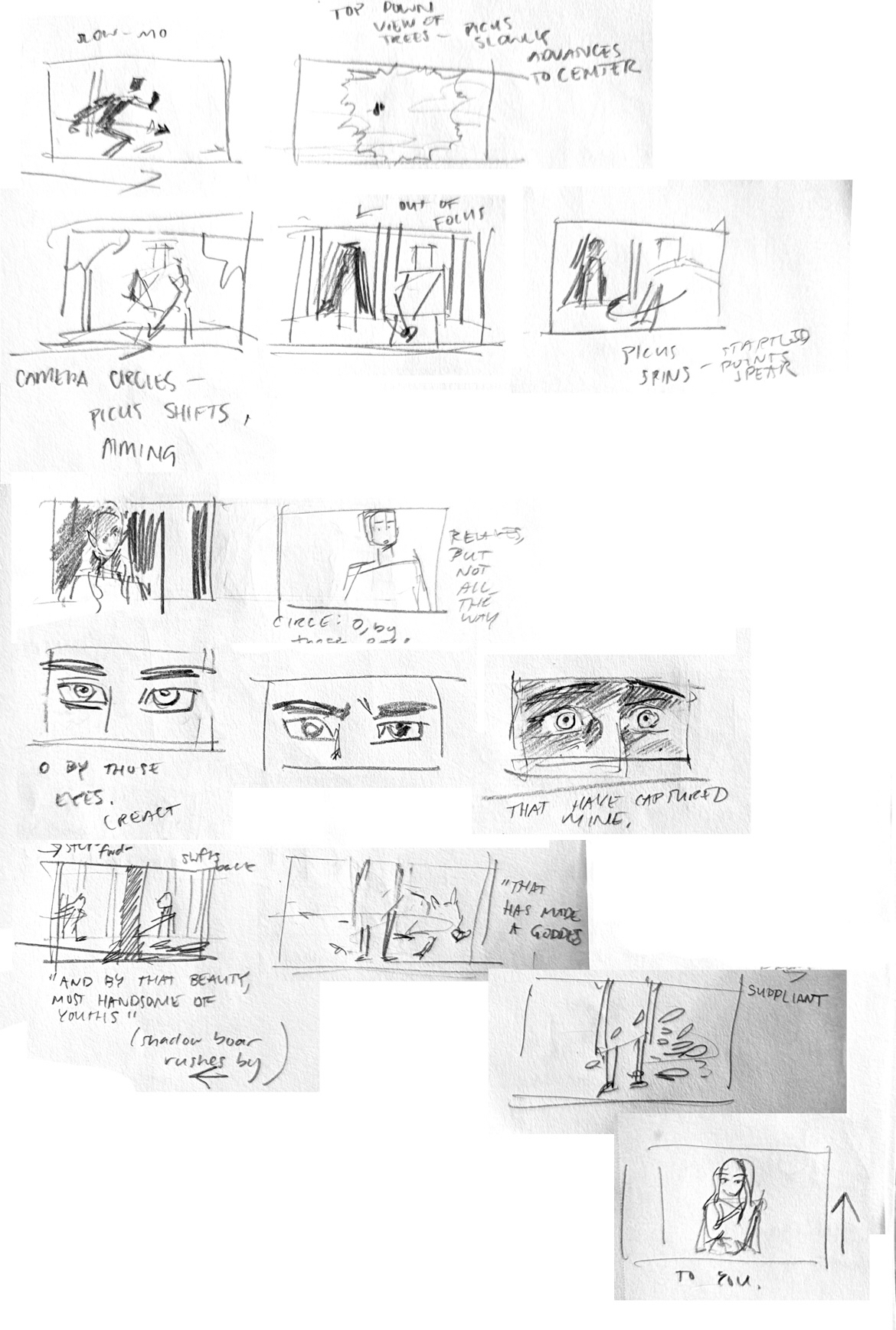
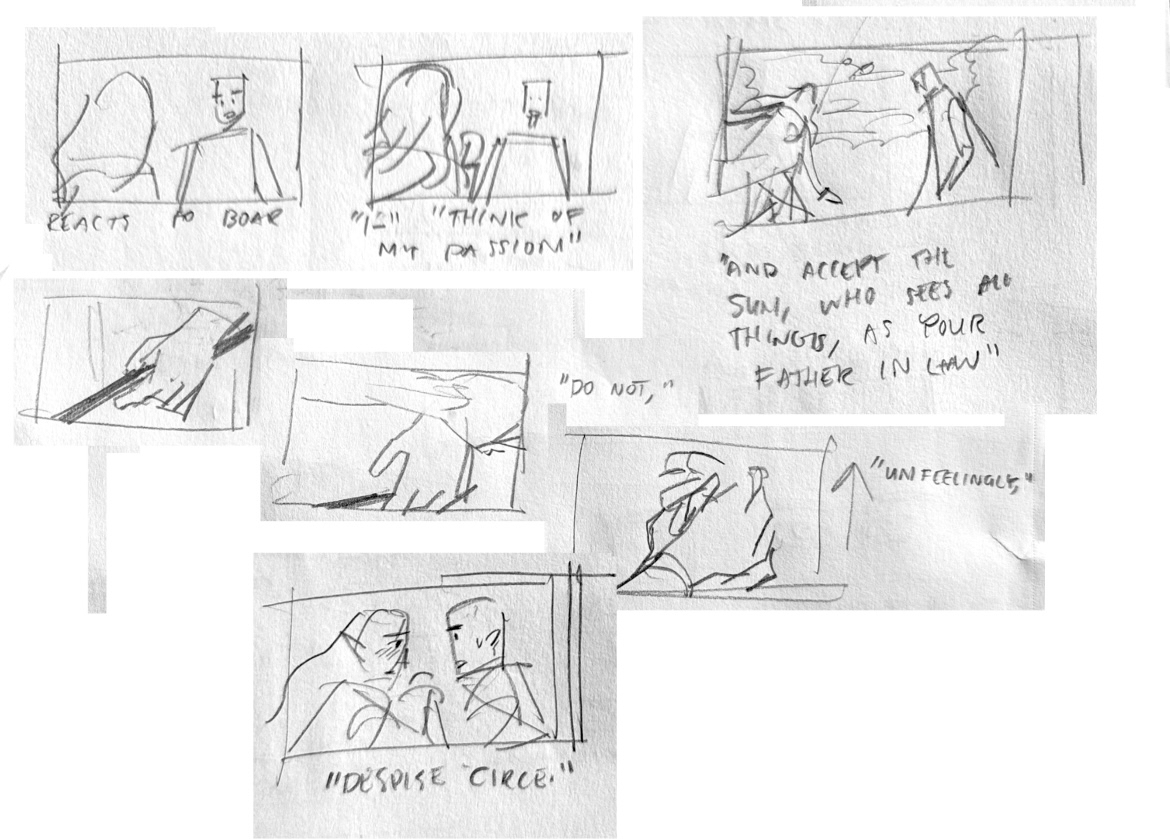
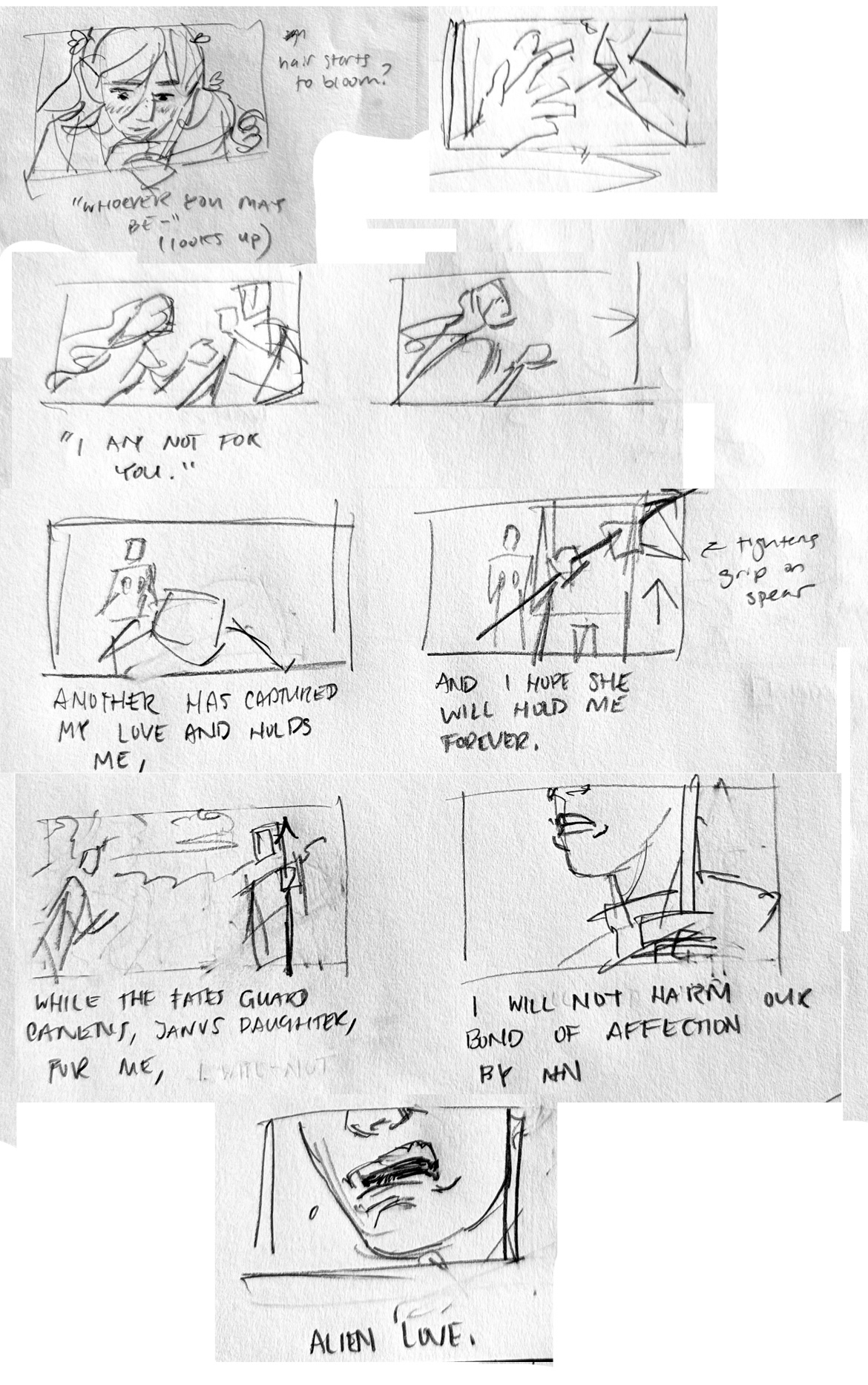
As the project's development progressed and Victoria and Grace helped me better understand the direction we were going, these thumbnails no longer fit the direction we were taking with our narrative. I do still like the composition of some of these shots, but they ultimately follow Circe's story as told by Ovid, not by us.
Although this iteration was scrapped in the end, it provided me a valuable understanding of the source material we were working with.
Recharacterizing Circe and Picus
Notably, Ovid treats Circe’s character as very antagonistic compared to Homer and Apollodorus. Her personality is quite volatile, and her importance is reduced only to her interactions with the men she falls in love with on a whim or her inexplicable violence. The interaction between Picus and Circe is not actually witnessed by the narrator himself- instead the story is relayed to him by Macareus, one of Ulysses' companions, who claims to have been told this story by one of Circe’s servant girls (Book 14, Line 479). (Macareus, it should also be noted, falls in love with his sister and gets her pregnant in another work of Ovid’s. He promises to marry her, however never does and is not present for the child’s birth. Their father, the god of wind, finds out about this child, and orders for his sister to kill herself and the child while Macareus takes sanctuary in the temple of Apollo.)
Although the audience of Ovid’s Metamorphoses is meant to trust the narrator’s sources of information, we have chosen to approach the work with the possibility of an unreliable narrator in mind. It is a “he-said, she-said, she-said” narrative from the mouth of a man who fled responsibility when his sister was sentenced to death for an incestuous child that he fathered.
This is also the only mention of Picus in the entirety of Ovid’s Metamorphoses. Picus exists only in Roman versions of ancient myth, and does not have a Greek counterpart. In a commentary on Virgil’s Aeneid, 5th century grammarian Servius posits that Picus attempted to pursue a different wood nymph named Pomona, who did nearly everything in her power to be left alone by men. If we are to synthesize this with the idea that the source of Picus’s modern reputation is unreliable, we come to our project’s characterization of Picus- a man who outwardly appears noble and respectful, but leverages this position to pursue his own romantic whims among the nymphs.
Victoria, our game's narrative director, created a new script for me to thumbnail from, which the both of us gradually shaped to fit our vision for the scene.
New Thumbnails
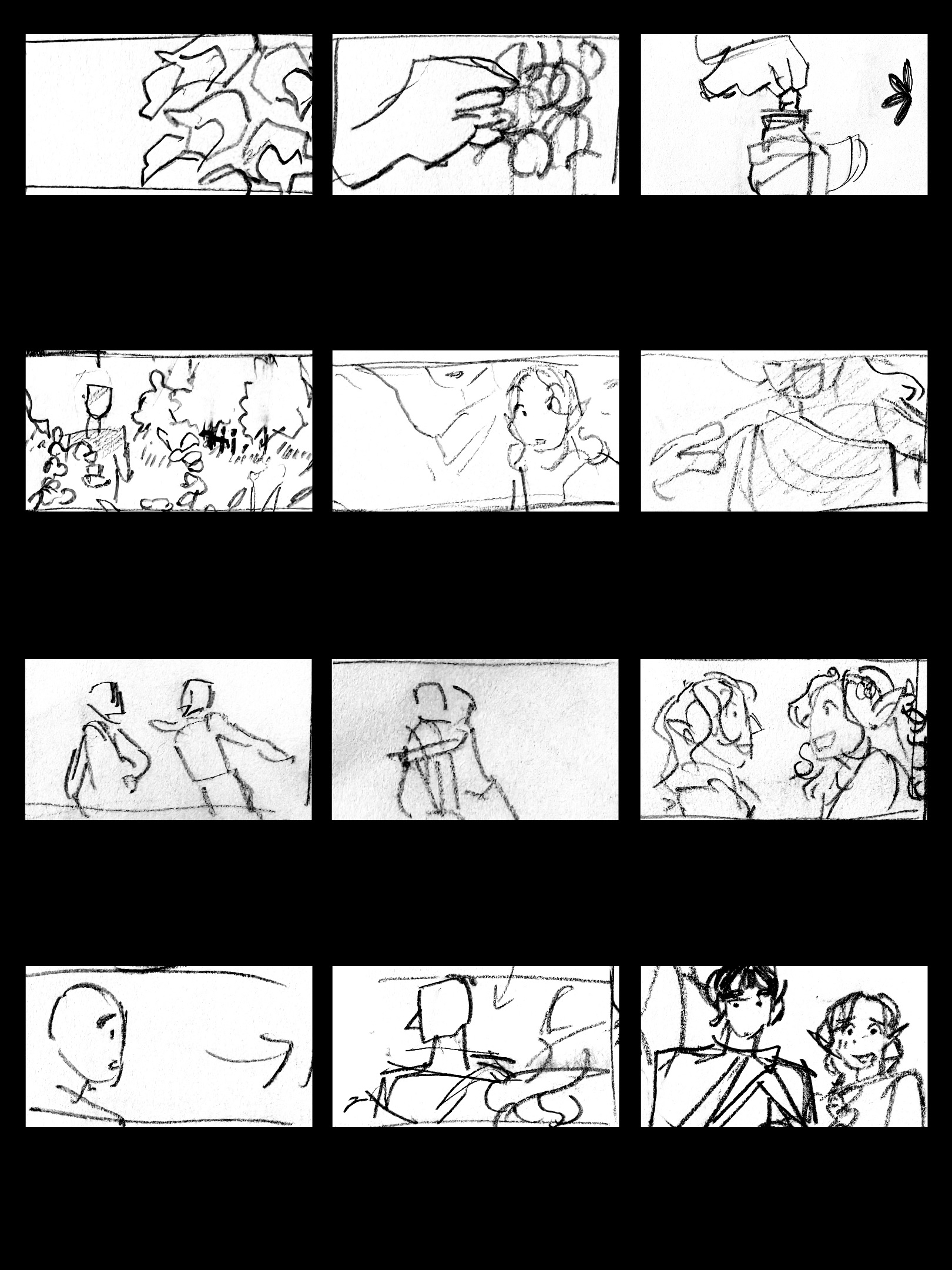
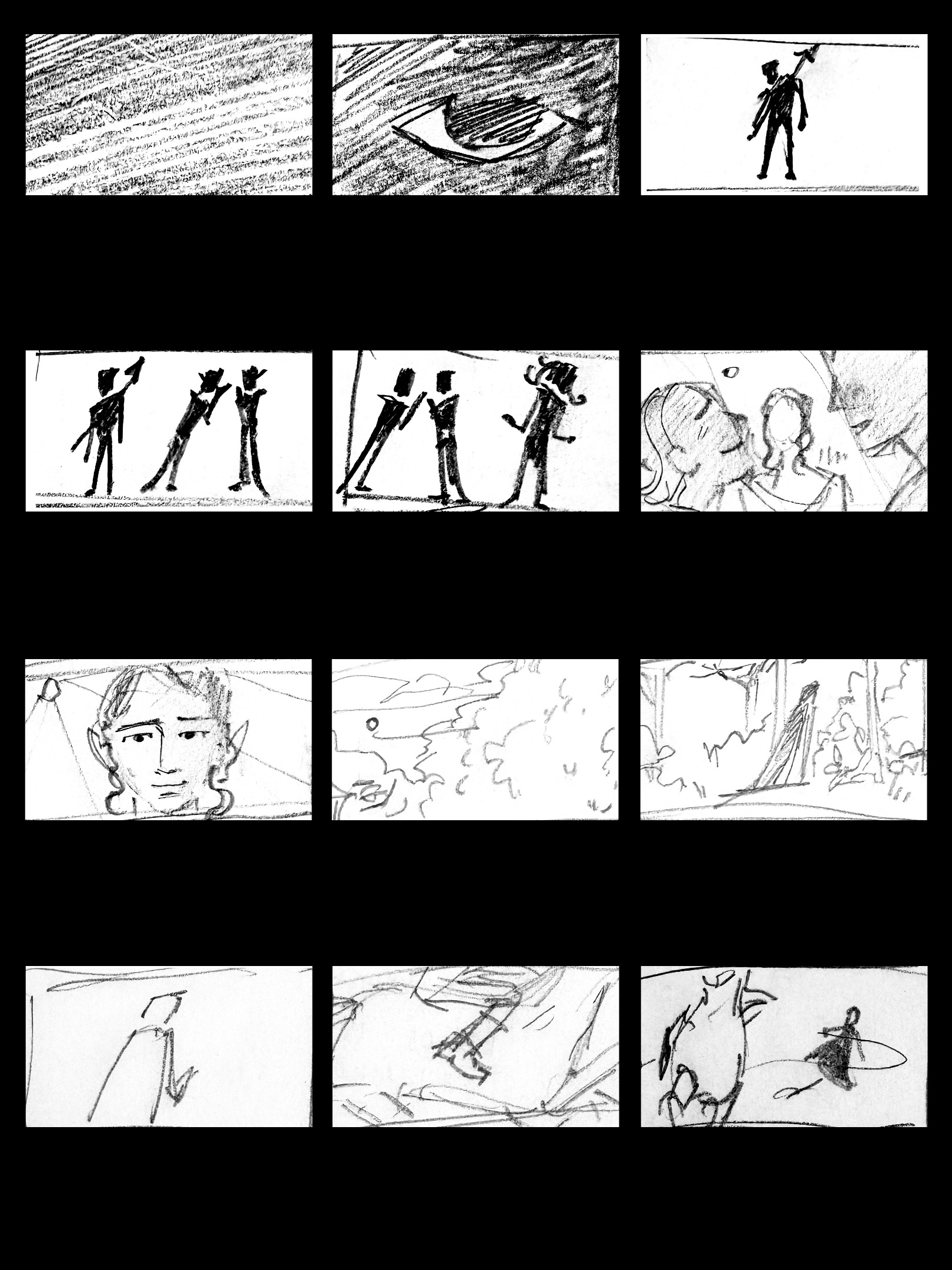
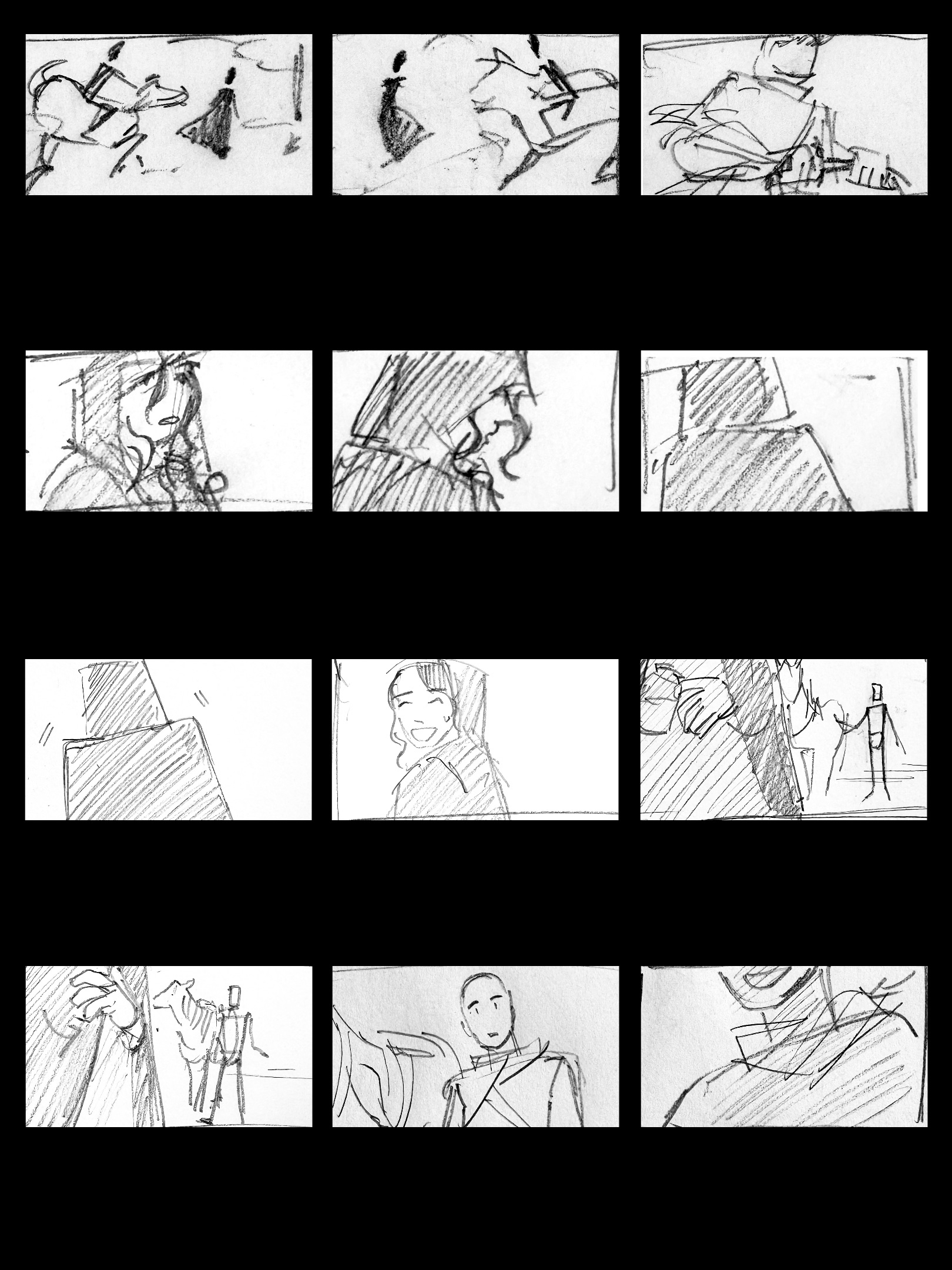
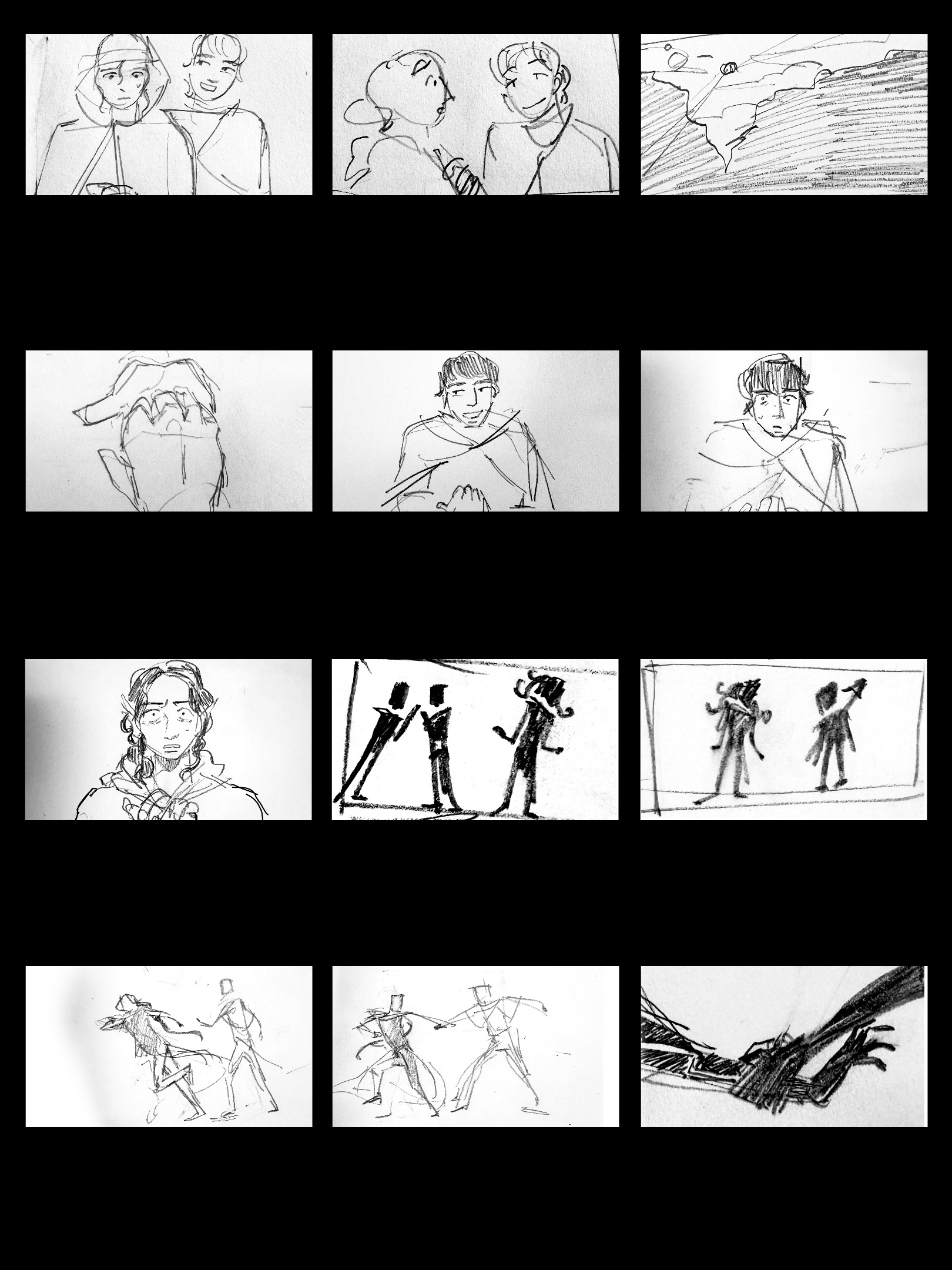
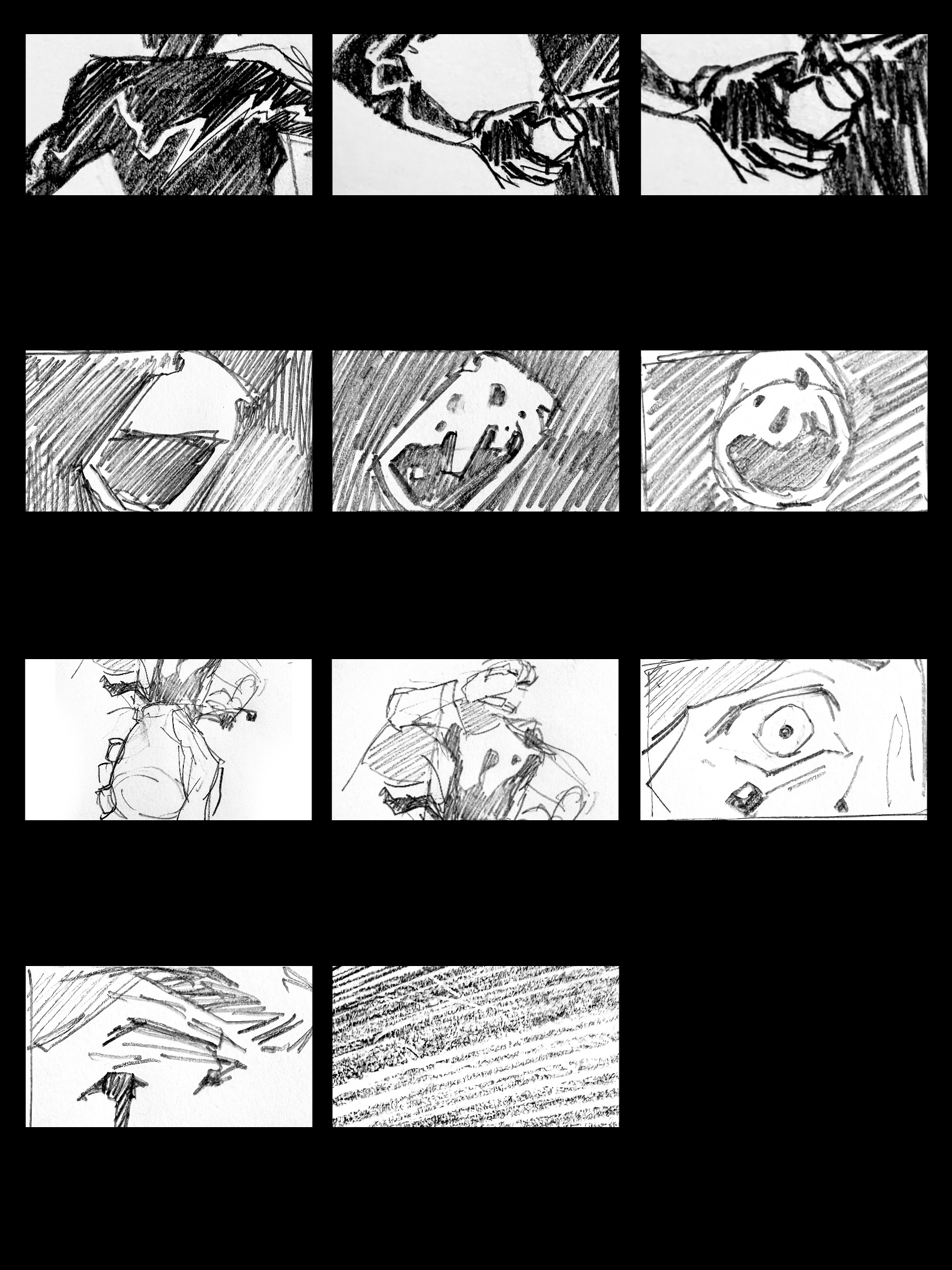
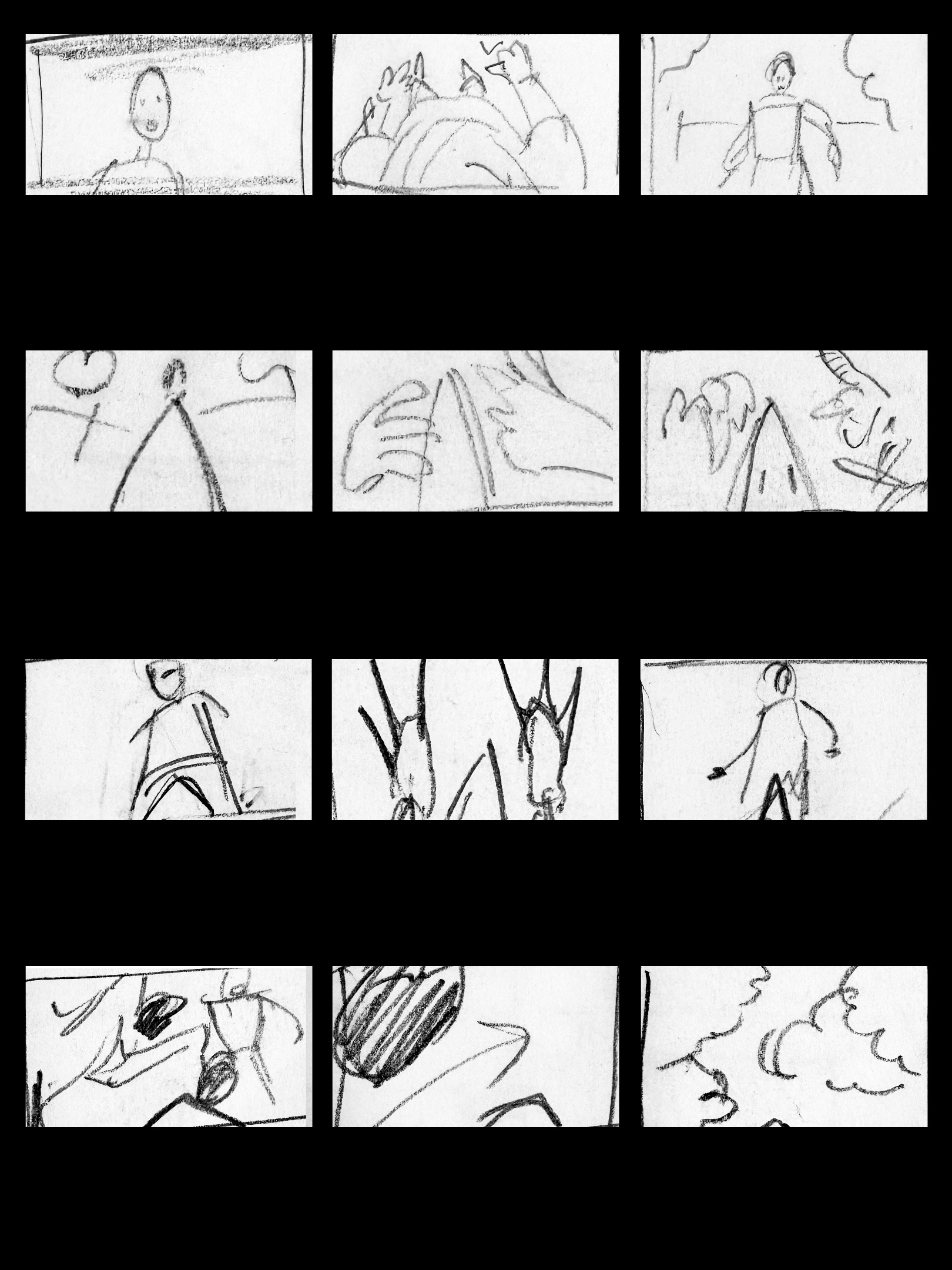
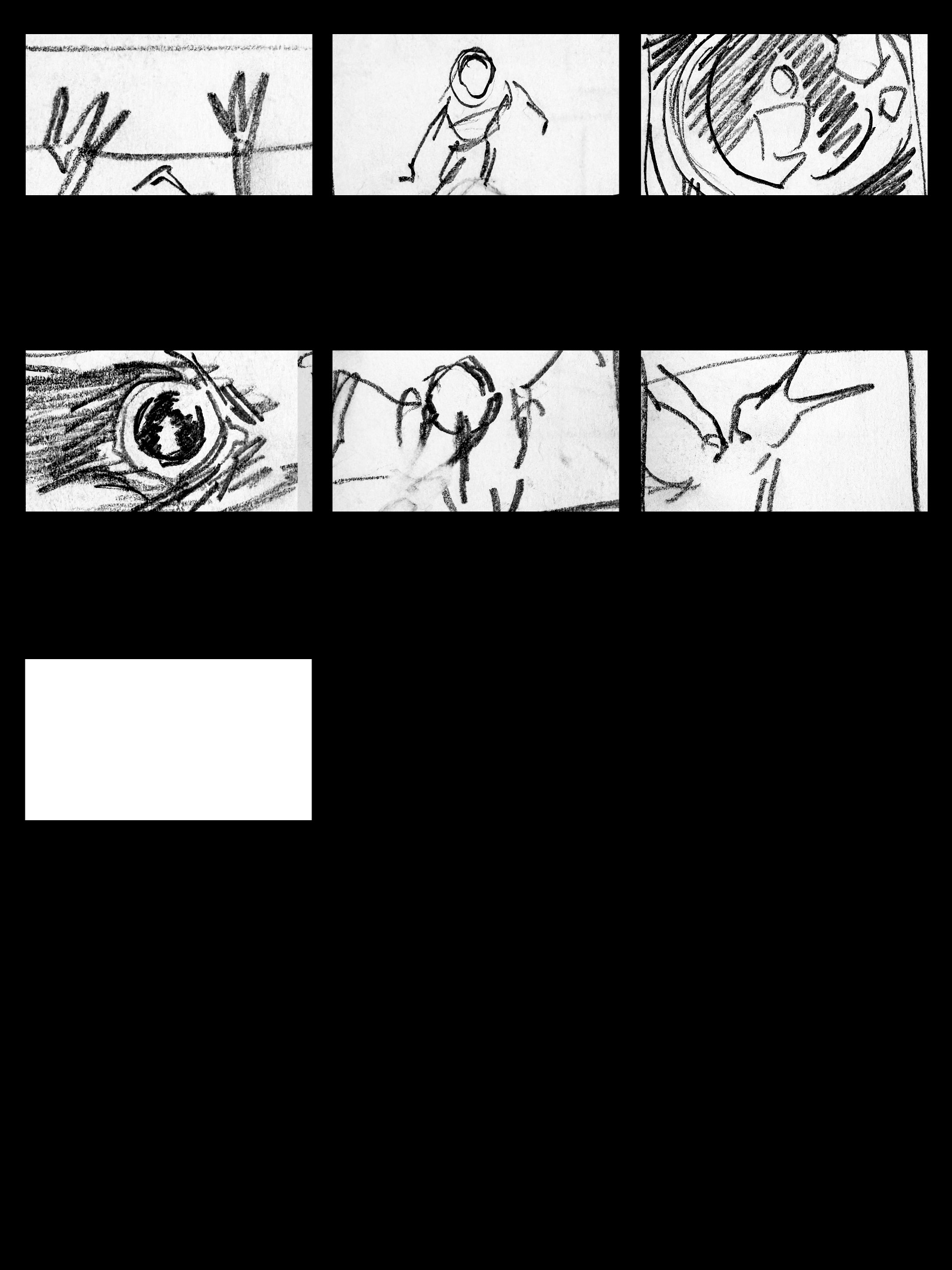
Vase Shots
The short intercut sequences drawn in silhouette will be rendered in the style of an Ancient Greek Athenian black-figure vase.
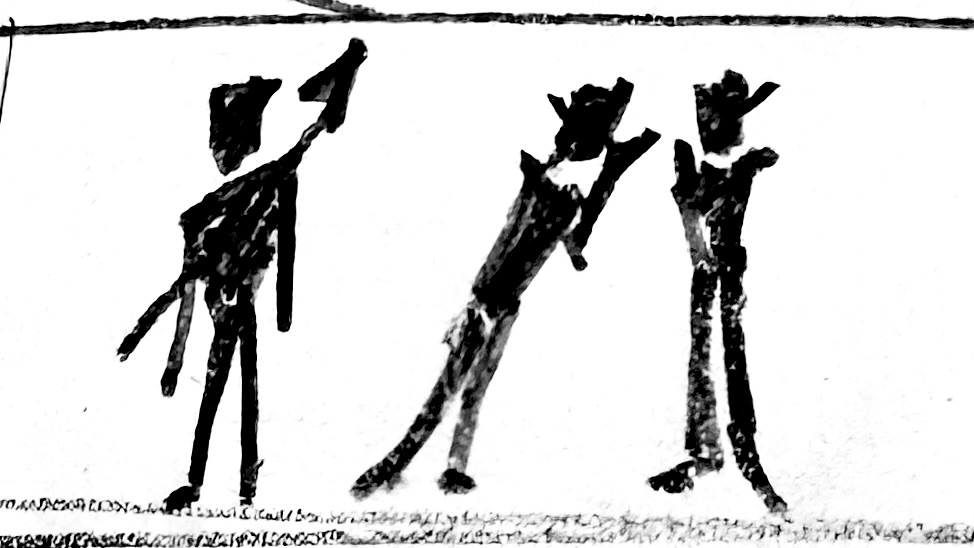
This was a great way to incorporate the historical side of the game’s subject. Although the image on the vase featured in the thumbnails is not from the historical record, its visual style is. I specifically chose to emulate Athenian black-figure pottery due to the emphasis on human figures and silhouette. The art on ancient Greek pottery often depicted popular mythological narratives, and it is from where our character designers drew much inspiration for their designs.
Each character on the fictional vase is represented not as themselves in full but instead as the silhouette of their reputation. In cartooning and animation, silhouettes are extremely important for communicating who a character is. I chose black-figure pottery as opposed to red-figure pottery to place more emphasis on this, drawing the viewer’s eye not to intricate details but instead to larger forms and what they communicate. Picus’s figure depicts him with an imposing hunting sphere, where Circe’s depicts her as a wicked sorceress.
Another reason for this choice is that the paintings on these jars were not flat, rather they wrapped the circumference of the jar. This means that only a portion of the jar’s narrative is visible at a time, and the jar must be physically turned to reveal its full context. This allowed me to establish each character one by one, turning the “jar” to reveal and obscure parts of the full image. Picus is the first to be introduced, initially seeming to face nothing, however in the cutscene’s second sequence, the jar turns a final time to reveal that Picus’s figure is facing Circe’s.
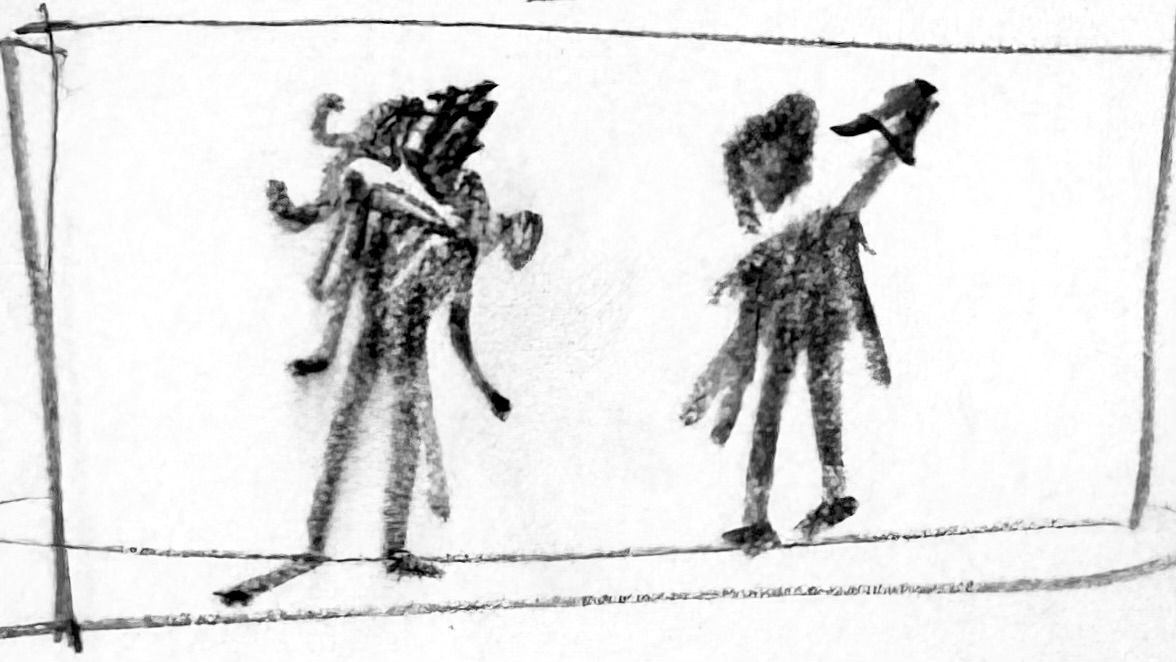
This final shot of the vase turning emphasizes that Circe and Picus’s encounter is not only an interaction of them as people but also a confrontation between their historical and social reputations. Because the visual style harkens back to historical record, it also imposes a sense of dramatic irony- we as the audience know that the external interpretations of this confrontation have already been decided, and they will not favor Circe.
Helios and the Sun
I wanted to emphasize the moments where Helios is watching by emphasizing the sun in the shot’s composition. In the first sequence, Helios has a clear view of the interaction between Circe, Picus, and Canens. The final shot of this sequence shows the sun looming over Circe’s shoulder, as she struggles to hide her disdain for Picus. She feels the pressure to act right in front of him.
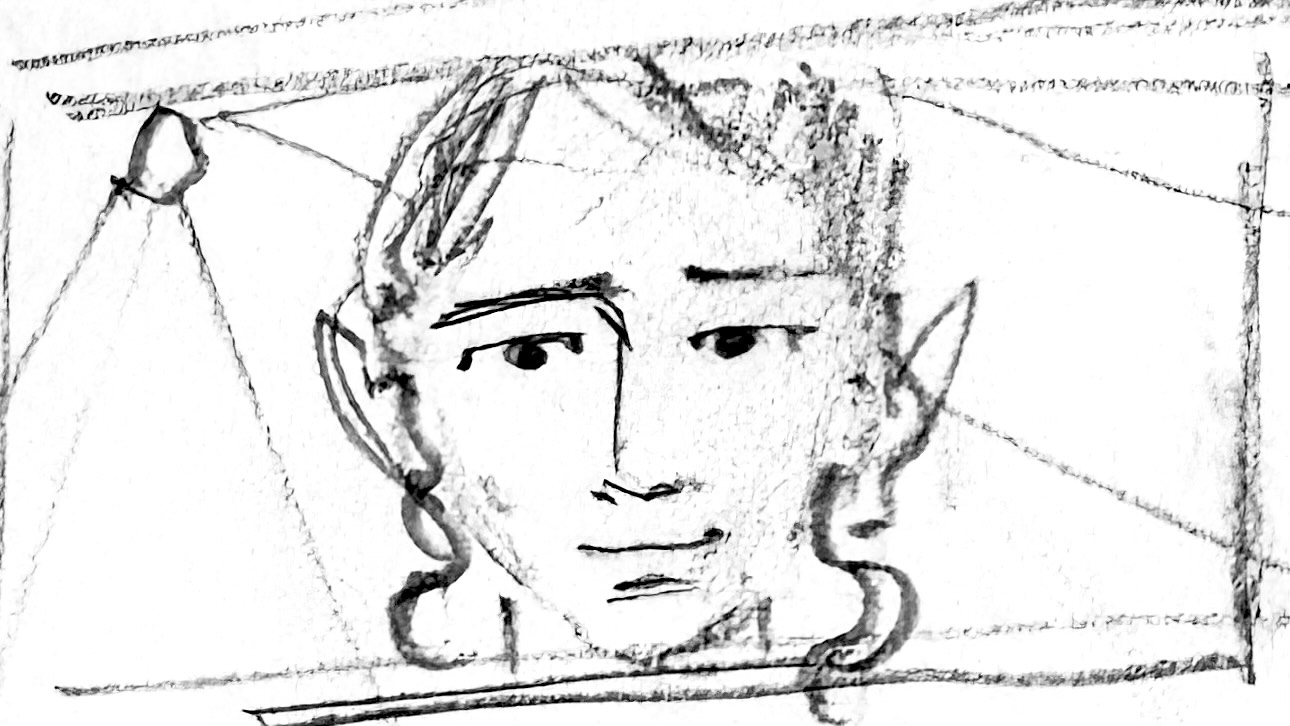
In the second sequence, Helios’s view of Circe’s position is obscured both by clouds and a canopy of trees. As such, Helios does not witness the full interaction between Circe and Picus- only the very end, when Circe transforms him.
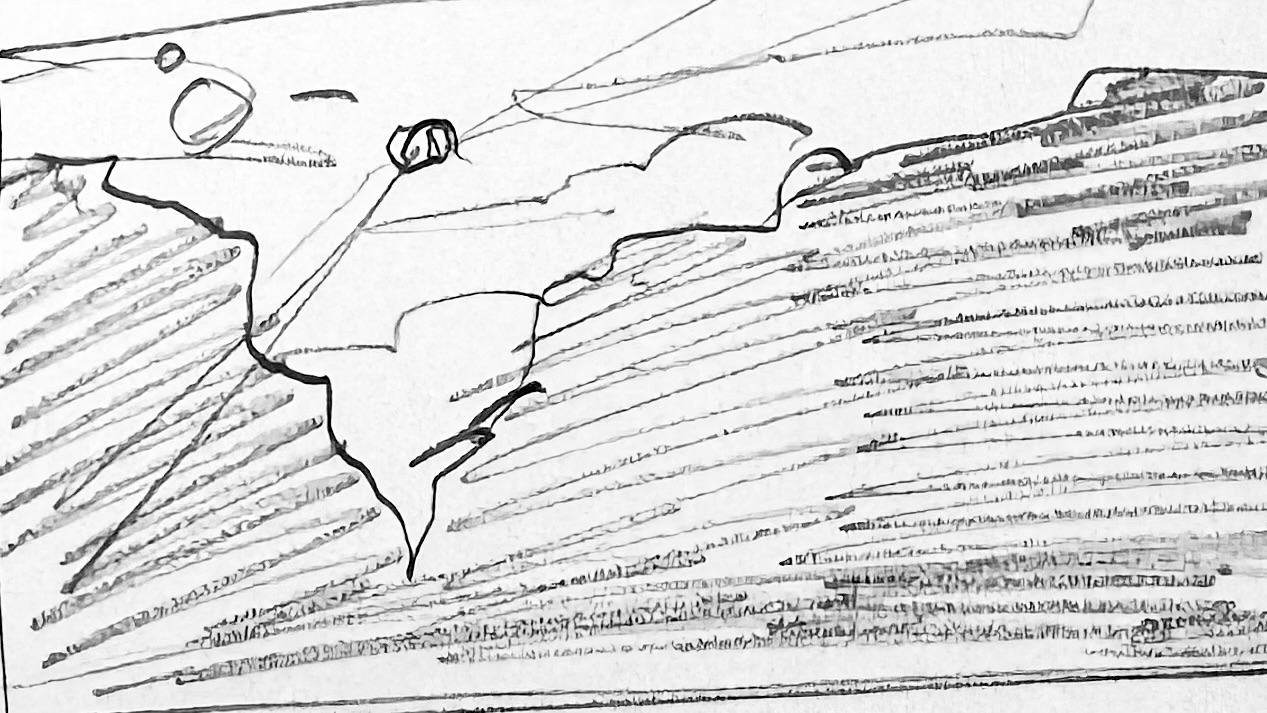
Picus’s Transformation
I was very excited to board this transformation sequence. I primarily work in the genres of horror and science fiction, so body horror is no stranger to me. I was particularly curious about what it might look like for a man to transform into a woodpecker from the perspective of the man transforming into the woodpecker.
There is one shot in the timed thumbnails that has been rendered in 3D, with a large rectangle where Circe would be standing. This was done as a way for me to iron out what it would look like for Picus’s front-facing eyes to move to the sides of his head, widening the field of view dramatically. I couldn’t quite get it down on paper how I wanted it, so I decided to use Maya to animate the FOV of a camera object while a cone, representing Picus’s beak, extruded from beneath it. If we were to fully animate this sequence, Picus’s transformation would likely be a combination of 2D and 3D animation to save us the headache of drawing out the complex camera movements of first person.
I also wanted to showcase Circe’s reactions to Picus’s transformation- she’s just about as horrified as he is. At this point in her life, Circe still does not fully understand her own magic. She did not intend to transform Picus- she was enraged with him and wanted him to let go, but her magic extrapolated her strong emotions into a strong magical output. When it comes time to render these thumbnails into actual storyboards, I definitely want to emphasize the horror in Circe’s facial expressions and body language.
The sound effects currently in the timed thumbnails are placeholders- I plan to spend a good amount of time finding foley that makes the audience’s skin crawl. A man turning into a bird is not a biologically pleasant ordeal.
Circe’s Boar
In Ovid’s Metamorphoses, Circe lures Picus to her with a phantom boar. This was included in my initial thumbnails, but omitted from the more recent ones. While I could have included a phantom boar of Circe’s creation to help her gather ingredients for her potion, we as a team decided not to, as that kind of ability would not be reflected in the game’s mechanics due to our limited scope. Thankfully, the sequence is set up in such a way that this detail could easily be added in should our scope expand.
Αἰαία
Circe game!
| Status | Prototype |
| Authors | ameliorez, Para_noiaBunn, ClownCarCore, EisenIrons, theweze, Ty, Jonah520436, Endoplasmian, dawsonturska |
More posts
- Letters from Circe’s Island: Dev Log #92 days ago
- Letters from Circe’s Island: Dev Log #89 days ago
- Letters from Circe’s Island: Dev Log #718 days ago
- Letters from Circe’s Island: Dev Log #624 days ago
- Letters from Circe's Island: Dev Log #531 days ago
- Letters From Circe's Island: Dev Log #438 days ago
- Letters from Circe's Island: Dev Log #346 days ago
- Letters from Circe's Island: Dev Log #161 days ago
Leave a comment
Log in with itch.io to leave a comment.